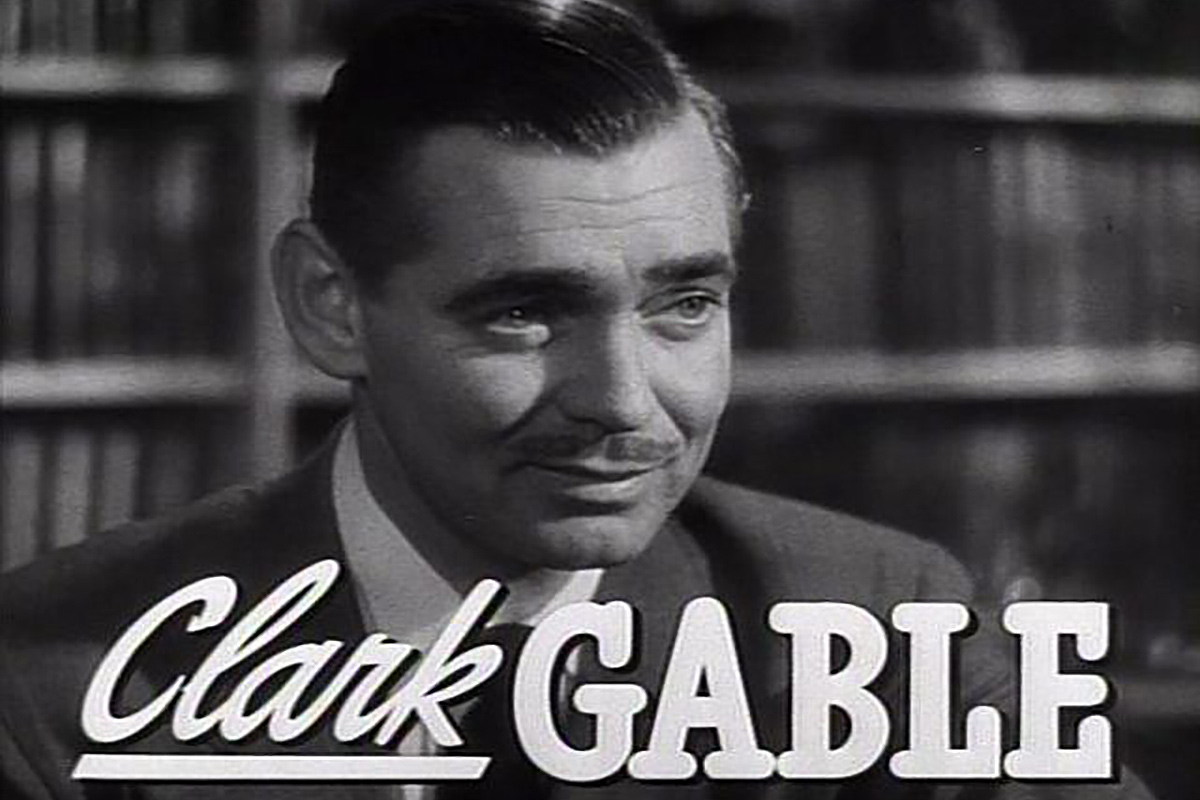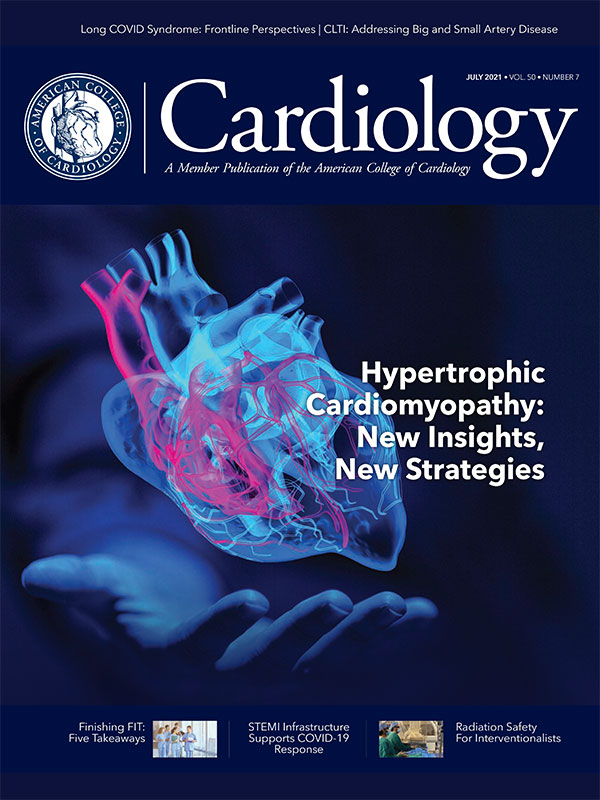Editor's Corner | The "King of Hollywood" and 60 Years of the Coronary Care Unit

When Clark Gable, the "King of Hollywood," died unexpectedly in 1960 at the age of 59 after suffering an acute myocardial infarction (AMI), there weren't any coronary care units (CCUs). During his 10-day hospitalization, his treatment was limited to bed rest, oxygen, anticoagulants and sedatives. At that time, lifesaving CPR, defibrillators or cardiac telemetry to prevent sudden cardiac death were not commonly used.
Gable was one of the most popular actors in the world and at the time of his death the cardiovascular world was on the cusp of a major paradigm shift in the management of patients with AMI. In fact, his death helped drive the concept of dedicated CCUs in the U.S.
The story of the CCU is one of breakthroughs in diagnosis and treatment, as well as technology, and advances in the field of nursing (an empowerment that eventually led to team-based care) and the development of critical care medicine.
Evolution From Home Care to the CCU
By the time of Gable's death in the early 1960s, AMI was becoming recognized as the most common cause of death in the U.S. and Europe. Bed rest, whether at home or in general medical wards or private rooms in the hospital, was a common treatment for AMI based on recommendations dating back to 1956 by Charles K. Friedberg, MD, in his classic textbook Diseases of the Heart and observations initially made in 1912 by James B. Herrick, MD, of thrombotic occlusion of a coronary artery on postmortem examination of a patient with AMI. Additionally, anticoagulants, such as heparin and warfarin, were also recommended therapies.
However, there were also signs that things were beginning to change. New technologies catalyzed the conceptualization of the CCU, including the role of closed-chest CPR, oscilloscopes for cardiac monitoring, pacemakers and transthoracic defibrillators. In 1956, Paul Zoll, MD, described treating cardiac arrest with an external defibrillator, and the effectiveness of combining mouth-to-mouth breathing, sternal compression and closed chest electrical defibrillation in restoring normal cardiac function in patients with ventricular fibrillation was shown in 1960 by William B. Kouwenhoven, MD.
The first descriptions of the CCU concept were published almost simultaneously in October 1961 by U.S. cardiologist, Morris Wilburne, MD, FACC, in Circulation, and British cardiologist, Desmond Julian, MD, in The Lancet. In May 1962, Bethany Hospital in Kansas City, MO, opened the first CCU in the U.S, under the leadership of Hughes W. Day, MD. In 1963, Wilburne published a paper in JAMA, and referenced the death of an unnamed actor who was clearly Clark Gable: "The recent such death of a prominent motion picture performer, whose medical management was of unqualified excellence, precipitated nationwide headlines in the lay press and created a public awareness that, even with optimum care and smooth convalescence, recovery was not assured. Recent developments in cardiac resuscitative technique have brought into clearer focus medicine's potential in preventing such deaths."
CCU units quickly started to be implemented worldwide, thanks in part to these early actions. Advocacy by Eliot Corday, MD, MACC, who became president of ACC in 1965, and Michael DeBakey, MD, also helped further the development of CCUs and pioneer modern cardiac care. Together they played a central role in the creation of the Heart Disease, Cancer, and Stroke Amendments of 1965, signed into law by President Johnson, which provided funding that helped to disseminate the CCU model across the U.S. Corday also played a pivotal role in organizing the 1967 National Conference on Coronary Care Units sponsored by the ACC, American Heart Association and the federal government's Heart Disease Control Program.
Continuing to Refine AMI Care
By the late 1960s, there were more than 350 CCUs as well as a significant reduction in death from ventricular arrhythmias and complete heart block. Early hospital mortality also dropped from about 30% to 15%, leading to more rapid deployment of ambulances and expedited emergency room evaluation of AMI patients and paving the way for even greater advances over the last 30 years. Eugene Braunwald, MD, MACC, said it best when he wrote in 1998 that the CCU was the single most important advancement in the treatment of AMI.
From the GISSI-1 trial in 1986 – the first large, randomized trial that definitively showed intravenous thrombolytic therapy with streptokinase improved survival in AMI patients – to more recent trials like FLOWER-MI, ISCHEMIA and PARADISE-MI that took center stage at ACC.21, we continue to build upon the legacies of Wilburne, Julian and others in optimizing the care and outcomes of AMI patients. Ultimately the death of the "King of Hollywood" not only proved to be a pivotal moment for cardiovascular science but it also helped to change the public perception of heart disease.
Opening the Door to 'D2B'
The evolution of CCUs, coupled with advances in AMI treatment, opened the proverbial door for important discussions around "door-to-balloon" times in the 1990s.
Beginning with GISSI-1 and then GUSTO-1, published in 1993, which firmly established that achievement of greater vessel patency at 90 minutes after treatment with intravenous t-PA (vs. streptokinase) resulted in a 15% reduction in mortality, the concept of short door-to-needle times became a priority in the treatment of AMI in hospitals across the world.
The ACC's successful Door to Balloon (D2B) Initiative, launched in 2006 with the goal of improving the timeliness of reperfusion therapy for patients with heart attacks, played an important in role in changing care and ultimately saving lives. The program involved over 1,000 hospitals worldwide and changed the proportion of patients with D2B times less than 90 minutes to greater than 75 percent in participating hospitals by 2008, with even greater improvements thereafter.
Today, global STEMI programs and efforts like the ACC's Global Heart Attack Treatment Initiative continue to build on these successes and lessons learned to advance solutions to AMI care in countries around the world.
Visit ACC.org/GlobalHub for more information on ACC's global efforts.

John Gordon Harold, MD, MACC, is professor of medicine at Cedars-Sinai Smidt Heart Institute, and David Geffen School of Medicine at UCLA.
Clinical Topics: Anticoagulation Management, Arrhythmias and Clinical EP, COVID-19 Hub, Invasive Cardiovascular Angiography and Intervention, Stable Ischemic Heart Disease, Vascular Medicine, Implantable Devices, SCD/Ventricular Arrhythmias, Atrial Fibrillation/Supraventricular Arrhythmias, Novel Agents, Statins, Interventions and Vascular Medicine, Chronic Angina
Keywords: ACC Publications, Cardiology Magazine, Ambulances, American Heart Association, Angioplasty, Balloon, Anticoagulants, Arrhythmias, Cardiac, Arteries, Bed Rest, Brain Injuries, Cardiology, Cardiopulmonary Resuscitation, Cause of Death, Concept Formation, Convalescence, Coronary Care Units, COVID-19, Critical Care, Critical Illness, Death, Sudden, Cardiac, Defibrillators, Emergency Service, Hospital, Epinephrine, Federal Government, Heart Arrest, Heparin, Home Care Services, Hospital Mortality, Hospitalization, Hospitals, Hypnotics and Sedatives, Kansas, Laboratories, Leadership, Leadership, Los Angeles, Medicine, Medicine, Mouth Breathing, National Institutes of Health (U.S.), Neoplasms, Oxygen, Oxygen, Pacemaker, Artificial, Pandemics, Perception, Percutaneous Coronary Intervention, Perfusion, Perfusion, Pregnancy, Pulmonary Embolism, Quinidine, Reperfusion, Respiration, Artificial, SARS-CoV-2, ST Elevation Myocardial Infarction, Streptokinase, Stroke, Tachycardia, Ventricular, Technology, Surgeons, Telemetry, Telemetry, Thrombolytic Therapy, Warfarin, ACC21, ACC Annual Scientific Session
< Back to Listings

